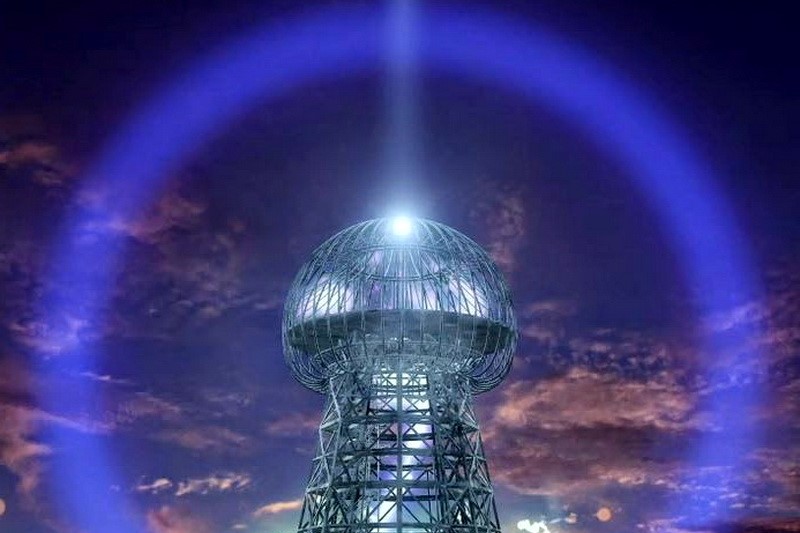






Trakonta ltd, 54031 Ukraine, Nikolaiv city, Electronnay street 81/4, E-mail: trakonta@gmail.com Tel: +380512714945; Mob, Viber: +380503180260

Discharge-pulse technology for piles
Technologies associated with the explosive conversion of electrical energy are called discharge-pulse technologies (DPT), and piles made using this technology are called DPT piles.
DPT piling process.
Technologies associated with the explosive conversion of electrical energy are called discharge-pulse technologies (DPT), and piles made using this technology are called DPT piles.
DPT piling process.
Trakonta ltd
Discharge-pulse technology for piles
Discharge-pulse technology for piles

The technology allows:
- to minimize excavation and dewatering during the construction of the zero cycle;
- to carry out work from the basement (at least 2.4 m high), basement or first floor, without inconveniencing the residents of the overlying floors and surrounding buildings;
- to use light small-sized machines;
- to carry out driving in unstable soils when the wellbore walls slip without casing;
- to obtain the maximum bearing capacity of piles and anchors with a minimum amount of drilled soil and the length of the pile or anchor root.
Camouflage increases in volume (broadening) at the base and on the shaft of the piles- DPT make it possible to effectively use the soil resistance and operate the pile-soil system as a single geotechnical massif. Piles-DPT, built in deep pits, prevent soil decompaction and bottom rise. Ground tests of DPT piles confirm their high bearing capacity in comparison with other piles of equal diameter.
Piles made using discharge-pulse technology are used in the construction of foundations of high-rise buildings, structures of the I (increased) level of responsibility, multifunctional high-rise buildings and complexes. Also, piles- DPT are used for buildings and structures of II and III levels of responsibility, buildings under reconstruction, architectural monuments of buildings located in dense development.
- to minimize excavation and dewatering during the construction of the zero cycle;
- to carry out work from the basement (at least 2.4 m high), basement or first floor, without inconveniencing the residents of the overlying floors and surrounding buildings;
- to use light small-sized machines;
- to carry out driving in unstable soils when the wellbore walls slip without casing;
- to obtain the maximum bearing capacity of piles and anchors with a minimum amount of drilled soil and the length of the pile or anchor root.
Camouflage increases in volume (broadening) at the base and on the shaft of the piles- DPT make it possible to effectively use the soil resistance and operate the pile-soil system as a single geotechnical massif. Piles-DPT, built in deep pits, prevent soil decompaction and bottom rise. Ground tests of DPT piles confirm their high bearing capacity in comparison with other piles of equal diameter.
Piles made using discharge-pulse technology are used in the construction of foundations of high-rise buildings, structures of the I (increased) level of responsibility, multifunctional high-rise buildings and complexes. Also, piles- DPT are used for buildings and structures of II and III levels of responsibility, buildings under reconstruction, architectural monuments of buildings located in dense development.
1. Well for treatment.
2. Electrode system.
3. Generator of impulse currents.
4. Concrete pump or magnum.
5. Zone of soil cementation.
6. Zone of soil compaction.
7. Camouflage expansion at the base of the pile.
2. Electrode system.
3. Generator of impulse currents.
4. Concrete pump or magnum.
5. Zone of soil cementation.
6. Zone of soil compaction.
7. Camouflage expansion at the base of the pile.
The essence of the pulse-discharge technology is that a well filled with fine-grained concrete or cement mortar is treated with a series of high-voltage electrical discharges. In this case, an electro-hydraulic effect arises, as a result of which the body of the pile or the root of the anchor is formed, cemented, and the surrounding soil is compacted. The initial diameter of the well is 130 ... 300 mm as a result of processing by a calculated series of discharges, depending on the energy supplied to the well and the hydrogeological conditions of the site, by more than 2 times. The surrounding soils are compacted, and the porosity in the impact zone of the shock pulse decreases. The dynamic impact that occurs during the molding process outside the processing area is insignificant and does not have a harmful effect on the reinforced structures and adjacent buildings. Discharge-pulse technology is environmentally friendly. This technology makes it possible to form piles and anchors of various configurations, with widening at one or several levels.
Advantages of electric discharge technology:
• piles, ground anchors are made in conditions where traditional technologies are ineffective;
• piles and anchors as a result of the treatment of wells with electric discharges provide a high bearing capacity of the structure;
• small-sized equipment is used in the manufacture, which allows to place everything necessary to complete a set of works within a specified time on a site of limited size;
• the fixing of "running" retaining walls and sliding slopes is provided by the device in the necessary places of geotechnical reinforced concrete elements;
• deepening of the basement and arrangement of underground floors by arrangement of underground geotechnical elements are carried out both according to ready-made projects and according to their design solutions;
• strengthening of foundations is carried out in such a way that there is no need to resettle residents, as well as to interrupt the activities of enterprises;
• the use of electric discharge technology for cementation of soils, masonry, foundation-soil contact increases the mobility of concrete, which ensures the penetration and filling of microcracks and voids;
• wells are made of small size, therefore, the impact of the work on existing buildings and structures is minimal, the volume of soil from the construction site is also minimized;
• since borehole piles are capable of perceiving large bending moments, they can be used not only in vertical, but also in inclined positions;
• as a result of soil compaction with electric discharges in boreholes 80-350 mm in diameter, the broadening of the pile body (anchor root) increases by 1.5-2.0 times, depending on soil conditions and well processing parameters.
• piles, ground anchors are made in conditions where traditional technologies are ineffective;
• piles and anchors as a result of the treatment of wells with electric discharges provide a high bearing capacity of the structure;
• small-sized equipment is used in the manufacture, which allows to place everything necessary to complete a set of works within a specified time on a site of limited size;
• the fixing of "running" retaining walls and sliding slopes is provided by the device in the necessary places of geotechnical reinforced concrete elements;
• deepening of the basement and arrangement of underground floors by arrangement of underground geotechnical elements are carried out both according to ready-made projects and according to their design solutions;
• strengthening of foundations is carried out in such a way that there is no need to resettle residents, as well as to interrupt the activities of enterprises;
• the use of electric discharge technology for cementation of soils, masonry, foundation-soil contact increases the mobility of concrete, which ensures the penetration and filling of microcracks and voids;
• wells are made of small size, therefore, the impact of the work on existing buildings and structures is minimal, the volume of soil from the construction site is also minimized;
• since borehole piles are capable of perceiving large bending moments, they can be used not only in vertical, but also in inclined positions;
• as a result of soil compaction with electric discharges in boreholes 80-350 mm in diameter, the broadening of the pile body (anchor root) increases by 1.5-2.0 times, depending on soil conditions and well processing parameters.
All rights reserved by Trakonta 1996 – 2021


